 A Visit from the Tone Police of Academe (2)
A Visit from the Tone Police of Academe (2)
… To continue from my previous post: You must understand that I inhabit a very different academic/scholarly world than Vincent Lavoie, author of L’affaire Capa: Le procès d’une icône (Paris: Les editions Textuel, 2017). The world in which I do my work prioritizes original research, careful scrutiny and analysis of primary source materials, etc., as well as the development of evidence, the introduction of substantial content on which other researchers can build … all that old-fashioned, 19th/20th-century stuff.
The world that Lavoie inhabits takes it for granted that archaic, outmoded scholars like me will do that kind of antiquated work, getting our hands dirty and our clothes dusty rummaging around in storage facilities, even getting out in the field to put our theories to the physical test. So (a) they don’t need to do that, because we will, and (b) it really doesn’t interest them at all. Much more fashionable and glamorous (and easy) to sit above such Stakhanovite manual labor — or the academic equivalent thereof — and opinionate about the language in which we conduct our investigations and convey our results to the world.
If you’ll permit me an analogy, this is the difference between baking bread and tasting bread. To bake bread, you must make a whole loaf. That requires knowledge, skill, and work. To taste bread and offer an opinion of it requires ingesting only a slice. Even a bite or two will do for that purpose.
Consequently, the substantive content of these two parallel Capa investigations — José Manuel Susperregui’s and those who preceded him in questioning the veracity of “Falling Soldier,” and ours addressing the D-Day images — and the reasoning underlying the conclusions of these independent inquiries, do not really matter to Lavoie and his ilk. They care nothing about the nutritional value of our bread as the result of our kneading and measuring and cooking. Only the texture and flavor of our bread concerns them. They are not cooks; they are gourmands. And you cannot fault a gourmand for eating only part of one dish before offering an opinion thereof, or for not even sampling another dish.
Real scholars will recognize this as (to use a technical term) pure bullshit. But real scholars are a dying breed. Those of us still at it are, by the lights of this younger generation, old and in the way of those who prefer “doing theory” to its logical corollary, “doing practice.”
Lavoie’s book thus functions as a postmodernist critique of Capa scholarship in general and the separate but related enterprises of Susperregui and ourselves in particular, a placement in presumably “ironic” quotation marks of our efforts, proposing them as quaintly if charmingly outdated attempts to determine concrete truths when — by presumably general consensus — all truth has become recognized as nothing more than the social construct du jour. The real irony here lies in that fact that while postmodern theory, largely discredited and deposited in the dustbin of history, has fallen out of fashion in Paris, London, New York, and other world capitals of academic discourse, word of this apparently has not filtered down to the provinces. This would explain why one of France’s Québécois “country cousins” from north of the U.S. border could convince himself that it still has currency.
•
I doubt that Lavoie’s book will get viewed by anyone knowledgeable about photography as a serious contribution to the literature on Capa, or the literature on photojournalism. It’s an academic exercise and a CV-padding effort, an argument without a “therefore,” instant ephemera.
Yet, to end this on a positive note, I do find Lavoie’s book significant, though surely not in the way its author intended. This is, to my knowledge, the first book on Capa to appear since our research began (leaving aside Florent Silloray’s graphic-novel bio for teenagers). And, though it did not center around Capa’s D-Day photos and the related myths, its author felt it necessary to address our research, if only to dismiss it. When even the author of a bit of Capa trivia finds it necessary to engage with our deconstruction of the Capa D-Day legend, that’s progress, and it augurs well for the future of Capa studies.
•
A few notes of my own:
• In a footnote on p. 40, Lavoie proposes and makes much of the fact that the title of Richard Whelan’s last published work on Capa, This Is War! Robert Capa at Work (ICP/Steidl, 2007) echoes that of David Douglas Duncan’s first book, presenting his images of the Korean conflict, This Is War!: A Photo-Narrative in Three Parts (Harper & Brothers, 1951). “Doubtless, the correspondence of these titles symbolically situates these two photographers in the same perspective of a heroic photojournalistic production,” Lavoie asserts (my translation), implying that it’s Whelan, on behalf of Capa, seeking to ride Duncan’s coattails.
Clearly, Lavoie remains unaware of the fact that Duncan and his publishers had borrowed this title from the famous feature spread of Capa’s Spanish Civil War photographs in the December 3, 1938 issue of the British magazine Picture Post — the same issue in which editor Tom Hopkinson declared Capa “the greatest war-photographer in the world.” So, in fact, it’s Duncan and his publishers, rather than Whelan and his, who sought to “situate these two photographers in the same perspective of a heroic photojournalistic production,” so as to present Duncan as the inheritor of Capa’s mantle — while the latter was still alive, I should add.
In using that title, then, Whelan simply reclaimed it as part of Capa’s legacy. It requires remarkable unfamiliarity with the Capa literature — including the very source that Lavoie cites, Whelan’s This Is War!, in which that author discusses the Picture Post feature — to make such a mistake.
• On p. 44, Lavoie asserts that Phillip Knightley, who became the first to challenge the veracity of Capa’s “Falling Soldier” in his 1975 book The First Casualty: The War Correspondent as Hero and Myth-Maker, approached “Henri Cartier-Bresson, Stefan Lorant, David Seymour, [and] O. D. Gallagher (sic)” for comments on Capa’s work and the ethics of photojournalism at the time he made that photograph. However, David Seymour (“Chim”) had died in 1956, making it unlikely that Knightley — who worked in his native Australia from 1946 through 1954, then in London for the next several years — ever “approached” Seymour on these or any other matters.
In fact, Knightley indicates clearly that he corresponded in 1974 with the Canadian Ted Allan, who served in Spain as a medic and knew Capa, Gerda Taro, and others in that circle. Allan recounted to Knightley a conversation he’d had in Spain with David Seymour shortly after publication of Capa’s “Falling Soldier,” in which Seymour told Allan that Capa had not actually taken that particular photograph. (See Knightley, pp. 211-12. This image was first published in the September 23, 1936, issue of the French magazine Vu.)
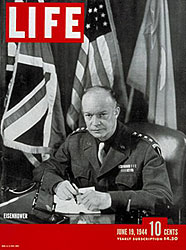
LIFE magazine, June 19, 1944 issue, with Robert Capa’s D-Day images and official U. S. Army Photo of Gen. Eisenhower on cover.
• On p. 154, Lavoie writes about Capa’s D-Day images that they “… finally achieved publication two weeks later in LIFE.” (My translation.) Wrong. The June 19 issue of LIFE that included Capa’s Omaha Beach images hit the newsstands on June 12, less than a week after the event. Here Lavoie, clearly not an observant reader of weekly periodicals, makes the elementary mistake of confusing this weekly magazine’s dateline (effectively, its sell-by date) with its publication date.
• Lavoie deploys such such descriptors as “pugnacious,” “virulent,” and “police procedural” in discussing my approach to this project. Notably, he employs no comparable adjectival flourishes with negative connotations when he comes to the grossly deceptive behaviors of members of the Capa consortium: Time-Life, Magnum Photos, International Center of Photography, Cornell Capa, Richard Whelan, Cynthia Young, John Morris.
• On p. 158, Lavoie writes of the outset of the Capa D-Day project, “Débute alors une véritable cabale contre la lêgende dorée des Magnificent Eleven, amplifiée à la faveur de la commémoration du Débarquement.” (“Then begins a veritable cabal against the golden legend of the Magnificent Eleven, amplified thanks to the commemoration of D-Day.” My translation.)
For the record, the dictionary definition of cabal:
[T]he contrived schemes of a group of persons secretly united in a plot (as to overturn a government) also : a group engaged in such scheme.
Because the term derives from the Hebrew word “Kabbalah” (a mystical interpretation of Hebrew scripture), it has — when used pejoratively, as in this instance — a distinct anti-Semitic connotation. Here Lavoie makes his bias against our project blatantly clear. Our efforts to dislodge the Capa D-Day myth from history, and from public consciousness, have taken place entirely in the light of day and on the public record — exhaustively, and, some would argue, exhaustingly so. In the face of such ample evidence of our commitment to transparency, defining us as secret schemers plotting in the dark grossly distorts the facts — especially when the Capa consortium that we oppose has in fact machinated largely behind closed doors. Shame on Lavoie and his publishers for this baseless slur. If the term “cabal” applies to any protagonists in this narrative, it’s to Cornell Capa, Richard Whelan, John Morris, ICP, et al, members in good standing of what I call the Capa Consortium.
• Regarding nomenclature: As I reported in an earlier post, when I queried Lavoie regarding the use of my first name rather than my initials in his references to me in this book, he explained that “It is a French custom to use full name instead of ‘nom de plume.’ In a bibliography properly edited you will thus read Howard Phillips Lovecraft and not H.P. Lovecraft.” (Scroll down to “What’s In a Name?” in that post.)
Clearly, then, Lavoie’s book — both its main text and its bibliography — did not get “properly edited.” The journalist O’Dowd Gallagher appears first under that name but subsequently (improbably, and inaccurately) as O. D. Gallagher on p. 44. J. Ross Baughman, who sparked the Capa D-Day project, appears as such, first initial and all, on p. 156. John Morris appears as John G. Morris (his middle name is Godfrey) on pp. 149ff. And I appear first as Allan D. Coleman in the main text (p. 156), then as A. D. Coleman in a footnote on p. 157 and all subsequent footnotes, next as Allan Coleman in the main text (p. 158) and eventually as Coleman Allan D. in the bibliography.
There you have one core problem with metacriticism: Unless you form early on the habits of rigorous research and accurate scholarly citation, then practice them assiduously, you get sloppy like this — and, at least among serious scholars, you lose your credibility. Not that you should care. As we all know, you’re above all that.
But here’s the richest irony: Though he concerns himself exclusively with secondary sources (Knightley and others in the case of “Falling Soldier,” and our team in the case of Capa’s D-Day images) rather than going directly to primary sources, Lavoie nonetheless thereby engages with what he terms “testimony,” gathering evidence — in the form of what he consider telling examples of our locutions — as one would in any “police procedural.” Then, employing that evidence, he makes a reasoned, rhetorical case for his own investigation and his conclusions, using language both accusatory and condemnatory: “pugnacious,” “virulent,” “a veritable cabal” — just like a prosecuting attorney in a courtroom. Mon Dieu! Quelle hypocrisie!
(Postscript, 5/4/19: As a courtesy, I notified M. Lavoie of the publication of this review, offering him as much space as he desired for any response he’d care to make. He sent me a short, snarky reply that he definitely does not want made public. — A.D.C.)
(Part 1 I 2)
•
(For an index of links to all posts in this series, click here.)
•
Special offer: If you want me to either continue pursuing a particular subject or give you a break and (for one post) write on a topic — my choice — other than the current main story, make a donation of $50 via the PayPal widget below, indicating your preference in a note accompanying your donation. I’ll credit you as that new post’s sponsor, and link to a website of your choosing.
 Include a note with your snail-mail address (or email it to me separately) and I’ll include three (3!) copies of The Silent Strength of Liu Xia, the catalog of the 2012-13 touring exhibition of photos by the dissident Chinese photographer, artist, and poet, who, after eight years of extralegal house arrest in Beijing, finally got released and expatriated to Germany in 2018. The only publication of her photographic work, it includes all 26 images in the exhibition, plus another 14 from the same series, along with essays by Guy Sorman, Andrew Nathan, and Cui Weiping, professor at the Beijing Film Academy. Keep one for yourself, share the others with friends.
Include a note with your snail-mail address (or email it to me separately) and I’ll include three (3!) copies of The Silent Strength of Liu Xia, the catalog of the 2012-13 touring exhibition of photos by the dissident Chinese photographer, artist, and poet, who, after eight years of extralegal house arrest in Beijing, finally got released and expatriated to Germany in 2018. The only publication of her photographic work, it includes all 26 images in the exhibition, plus another 14 from the same series, along with essays by Guy Sorman, Andrew Nathan, and Cui Weiping, professor at the Beijing Film Academy. Keep one for yourself, share the others with friends.


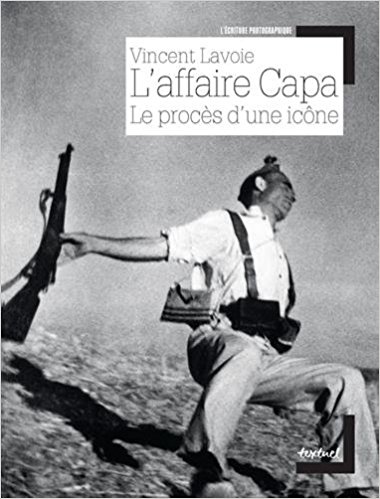
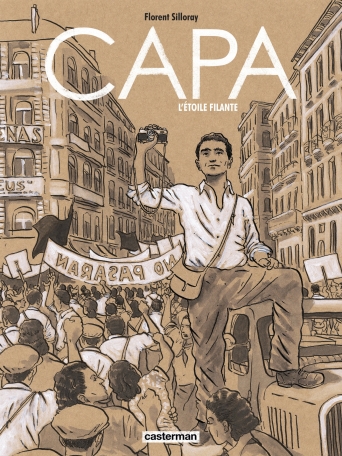
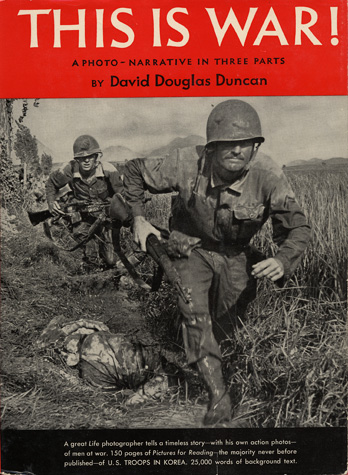
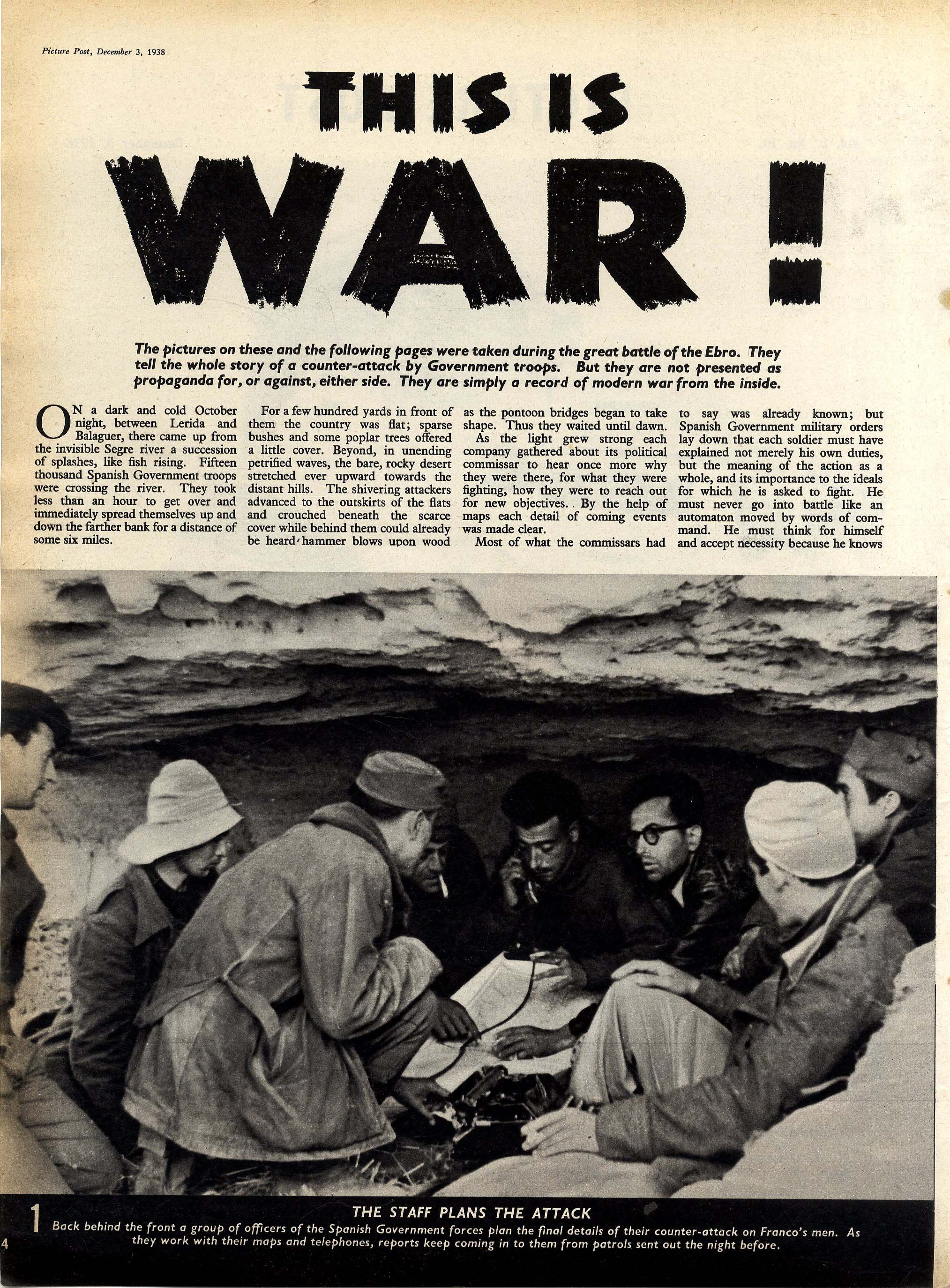
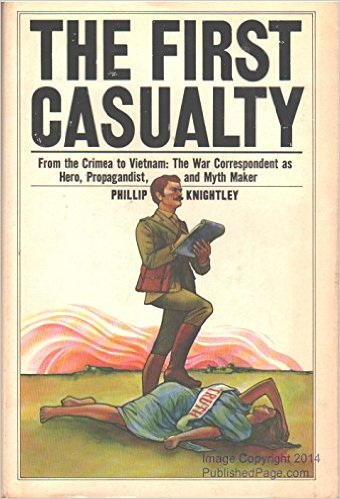




I love this:
“The real irony here lies in that fact that while postmodern theory, largely discredited and deposited in the dustbin of history, has fallen out of fashion in Paris, London, New York, and other world capitals of academic discourse, word of this apparently has not filtered down to the provinces. This would explain why one of France’s Quebecois “country cousins” from north of the U.S. border could convince himself that it still has currency.”